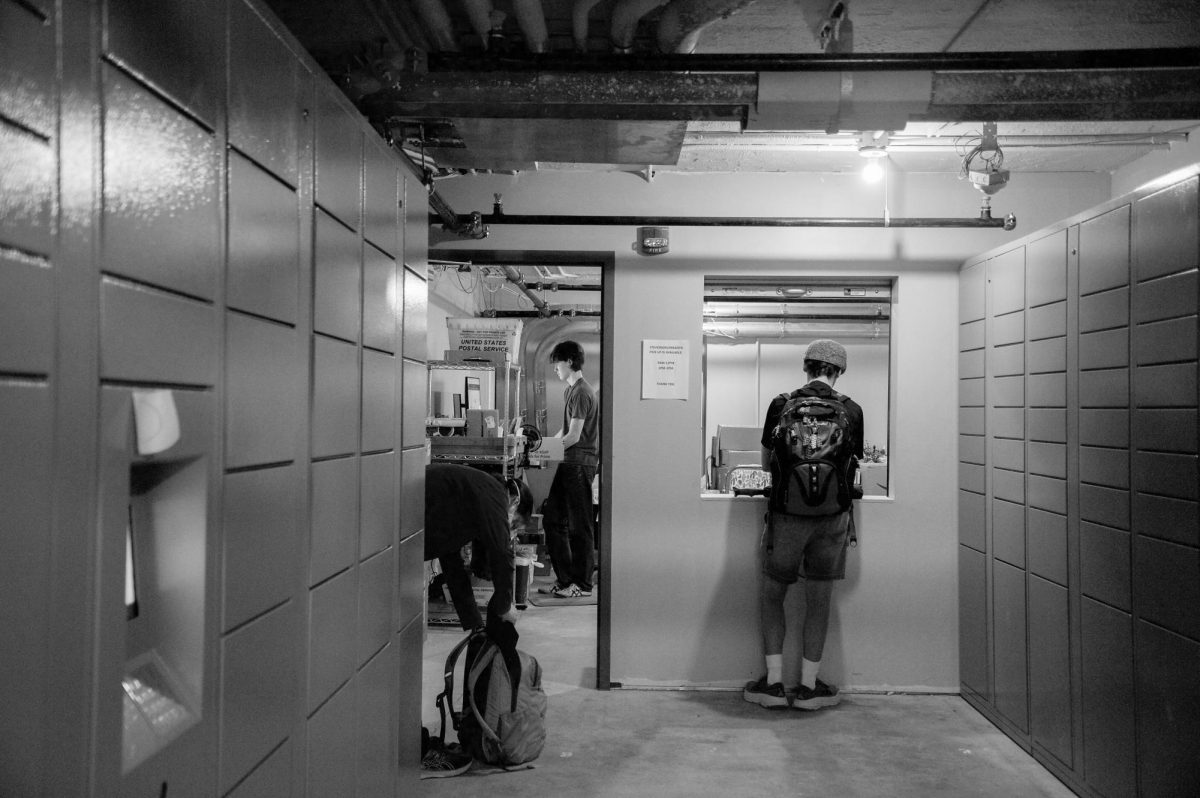On Sept. 6, I received a delivery notification for the pair of sneakers I had purchased. Five days and multiple visits to the mailroom later, I finally received them, marking the longest time I have ever waited for a package in my three years at Oberlin.
This year also marks the debut of mail lockers as Oberlin’s primary method of mail delivery. Prior to the spring semester of 2023, all students were assigned an Oberlin College Mail Room number where they would receive letter mail or wait in line to pick up packages from the window in the mailroom. The mailboxes and the area where students waited have been eliminated to make space for new mechanical systems, according to an article published in the Review (“Mailroom Prepares to Implement Electronic Lockers,” The Oberlin Review, Nov. 18, 2022).
A few months later, on Feb. 2, 2023, the Student Employment, Payroll, Finance, and Human Resources Office sent an email to student employees stating that the College had eliminated OCMR boxes, “effective immediately.” The new mail locker system had been announced several months earlier with a bulletin from the student mailroom posted on the College’s website Oct. 20, 2022.
The bulletin claims that the implementation of mail lockers would “improve the efficiency of processing more than 70,000 packages annually.” So far, the newly implemented locker system has completely failed to meet the needs of the mailroom and Oberlin’s student body, as has been demonstrated by the College’s announcement of a secondary package pickup location Sept. 11.
The announcement, shared with students in the Campus Digest, stated that Stevenson Hall room 100 would temporarily serve as an Amazon package pickup location, likely to help the mailroom cope with the enormous number of packages that students order from Amazon at the beginning of the school year. This change in mail procedure, however, was not communicated to the student body in a clear and obvious way, nor was it clear exactly what packages were available to pick up at Stevenson and when packages had begun to be stored there.
I believe that this change should have been communicated via a separate email to students, rather than thrown into the daily roundup of student announcements. At the very least, mailroom changes should have been included in the subject line of the email. Had I not taken the time to scroll even just a bit, I would have been completely unaware of this change.
The package that I was waiting for was shipped by a company owned by Amazon, which may have been why I was redirected to Stevenson from the mailroom when I went to pick up my package. However, this was not clearly communicated in the announcement in the Campus Digest. Nor was it communicated to students whether their packages that had been delivered prior to the announcement, like my package, would be at the mailroom in Wilder Hall or in Stevenson.
As I waited in line, student after student in front of me was redirected to Stevenson to pick up their packages from Amazon. Clearer communication about this change would have certainly saved me some time, and I would not have had to wait in line as long. It would almost certainly save the mailroom staff time as well, as they would be able to help students whose packages were, in fact, available at the mailroom, rather than entering students’ information into the mailroom system then redirecting them.
This lack of communication between the mailroom and the student body continued when I arrived at Stevenson and joined yet another line, made up largely of people whom I had just stood in line with at Wilder. While I was standing in line, we were informed that the Stevenson pickup location would be closing after we had been helped. While this didn’t affect me, I still found it frustrating that hours for the Stevenson pickup location were not communicated. When I encountered a package mixup and needed to return to Stevenson again, I had no idea when I would be able to do so.
The addition of the lockers has also increased the amount of space that a single piece of mail takes up before it is picked up by its recipient. The smallest size of package locker is still around twice the size of the old mailboxes, but they only hold one piece of mail at a time, whereas OCMR boxes could hold multiple pieces of letter mail. This has the potential to make picking up mail less efficient for students, in direct contrast to what the goals of mail locker implementation were.
All of that said, I want to be exceedingly clear that I do not blame the staff of the mailroom in the slightest for delays in students receiving mail. There is seemingly very little oversight about these changes and the impacts that they will have on Oberlin’s student body. In fact, the changes to the mail system are almost certainly significantly more detrimental to the mailroom staff than they are to the general student body. The elimination of the mailbox room and the renovations to Wilder have resulted in a drastic reduction of space for packages to be stored; before they are picked up.
The decision to change the way that the mailroom operates was one made by the College, and what’s done is done. It is my hope that as the beginning-of-school package rush begins to subside, so will the long lines and wait times for mail. I wish that this implementation had been made in a less hasty manner and that there had been clearer pathways of communication. I also hope that, with election season just around the corner and many Oberlin students receiving absentee or mail-in ballots, these issues are resolved sooner rather than later.



